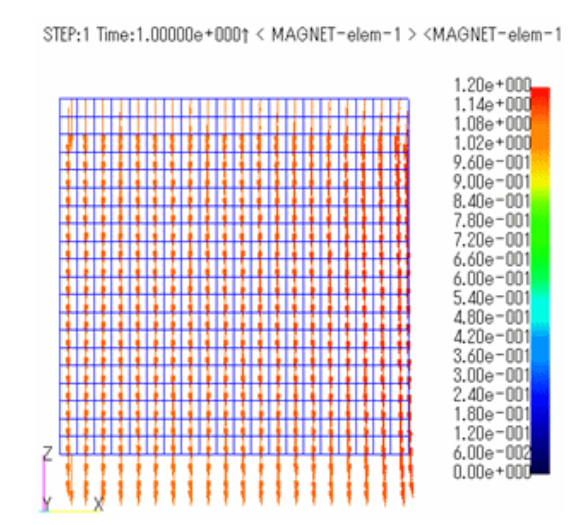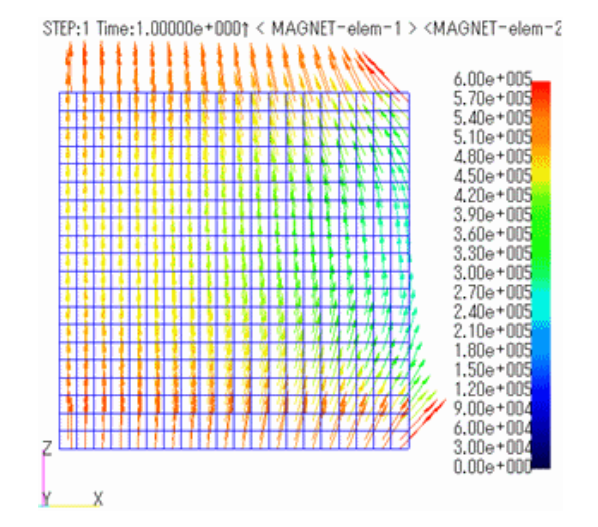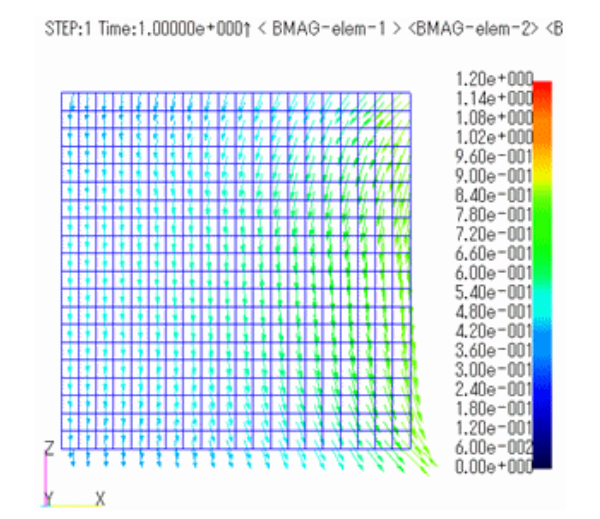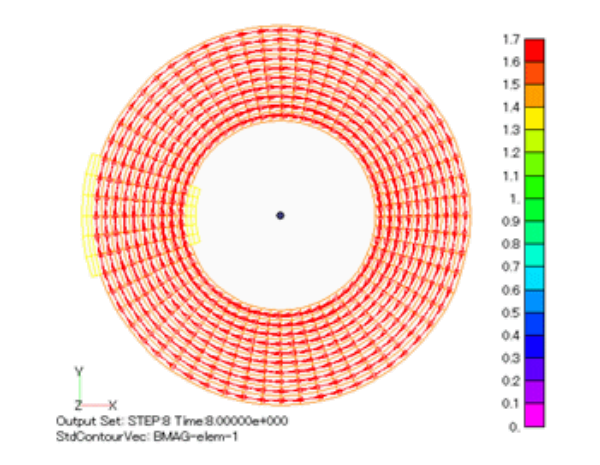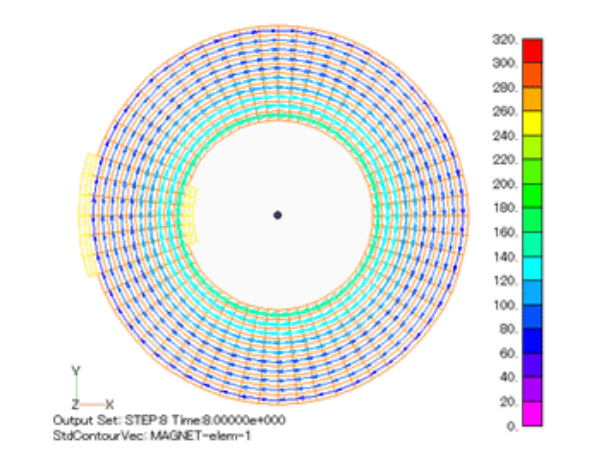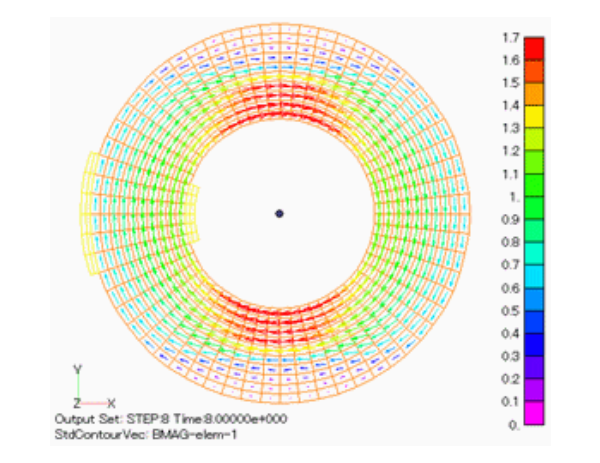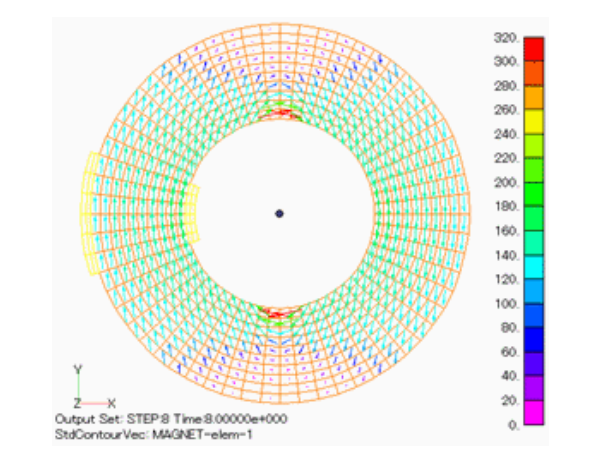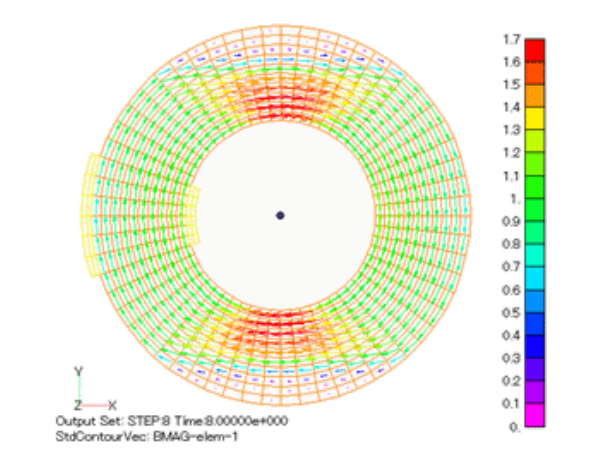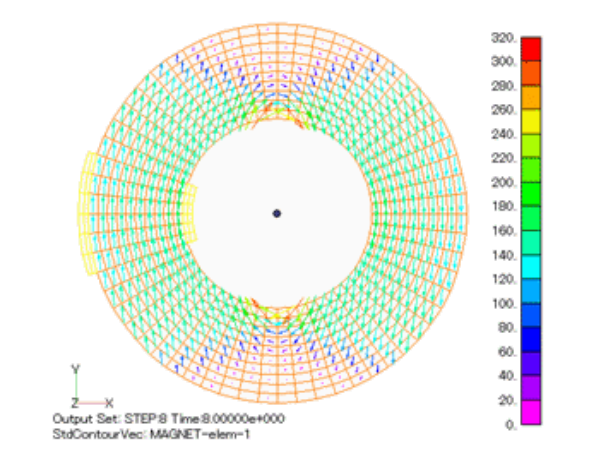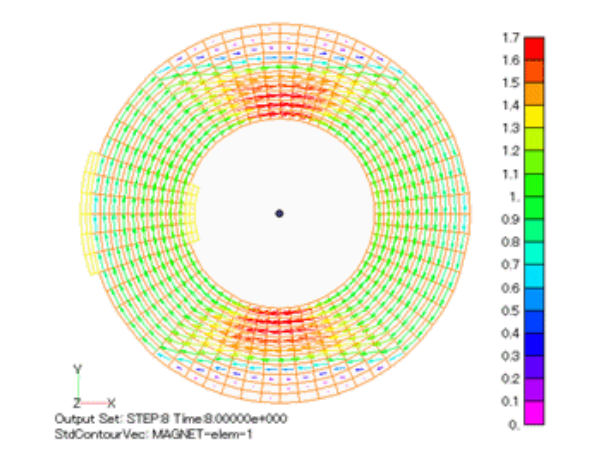Magnetic field strength (H) in magnetic material
- TOP >
- Analysis Examples by Functions (List) >
- Magnetic field strength (H) in magnetic material
Summary
Previously, EMSolution had the ability to output the magnetic flux density B (T) and magnetization M (T) as physical quantities in magnetic materials, but not the magnetic field strength H (A/m). Although it is possible to calculate the magnetic field strength from the relationship between the output magnetic flux density, BH curve, and magnetization, it is not easy to calculate the magnetic field strength H in the case of two-dimensional magnetic anisotropy because two-dimensional interpolation is required. We are pleased to report that it is now possible to output the magnetic field strength in magnetic materials. In addition, the magnetization M can now be output for two-dimensional magnetic anisotropy analysis, whereas previously it could not be output. However, since the magnetic field strength in air and nonmagnetic materials does not have magnetization M and can be easily calculated backward using the magnetic permeability of vacuum, this function is intended for magnetic materials only.
Explanation
The relationship between the magnetic flux density B, the magnetic field strength H, and the magnetization M in a magnetic material is expressed by the following equation.
$$B = \mu_0 H + M (1)$$As an example, let us analyze the coil and magnet of TEAM Workshop Problem 23, which is also used in “Problems in Electromagnetic Force Analysis“. This is an analysis of the magnet only, with the coil current set to 0A, and corresponds to Fig. 5 in “Problems in Electromagnetic Force Analysis“. We confirm that the magnetic flux density B and the magnetic field strength H are in opposite directions in the magnet. Fig. 1 shows the distribution of magnetization, magnetic flux density, and magnetic field strength. The magnetization of 1.22T is given as an input in the -Z direction, and it can be seen that the magnetic flux density is in the same direction and the magnetic field strength is in the opposite direction.
Fig.1 Magnet magnetization, magnetic field strength,
and magnetic flux density distribution
Next, let us output the magnetic field intensity using the ring model shown in “Analysis using nonlinear two-dimensional anisotropic magnetic properties”. The magnetic material is 35G165 with large uniaxial anisotropy, and the easy direction of magnetization is in the x direction (0 degrees) and the hard direction is in the y direction (90 degrees). For reference, we show an analysis in which the BH curve in the easy direction of magnetization (0 degree) is given as isotropic. Also shown is an analysis in which independent characteristics are given in the XYZ directions, with the BH curve in the easy direction of magnetization (0 degrees) in the X direction, the BH curve in the difficult direction (90 degrees) in the Y direction, and the specific magnetic permeability in the Z direction.
This is a static magnetic field analysis where a current of 48 AT is applied to the coil. In the isotropic case, the magnetic flux density and field strength are in the same direction, but in the XYZ-direction independent and two-dimensional magnetic anisotropy cases, the magnetic flux density and field strength have angular differences, resulting in different magnetic flux density and field strength distributions. In addition, the two-dimensional magnetic anisotropy analysis can now output magnetization, which is shown here for reference. The angular difference between magnetic flux density and magnetic field strength shown in these analyses is due to the magnetic anisotropy of the material, and the magnetic properties are based on the initial magnetization curve, which does not take hysteresis into account. If you are interested in hysteresis-aware analysis, please contact us from “here”.
Fig.2 Magnetic flux density and magnetic field intensity distribution in isotropic magnetic properties
Fig.3 Magnetic flux density and magnetic field intensity distribution for independent magnetic properties in XYZ direction
Fig.4 Magnetic flux density and magnetic field strength distribution in two-dimensional magnetic anisotropy
Here we have shown that it is possible to output the magnetic field intensity within a magnet or magnetic body. In addition, magnetization output is now also available for two-dimensional magnetic anisotropy analysis. These can be easily output by post-processing, and we hope you will use them.
The rest of this page is for members only.
Analysis Examples by Functions
Magnetic field by integration of magnetization and current
©2020 Science Solutions International Laboratory, Inc.
All Rights reserved.


